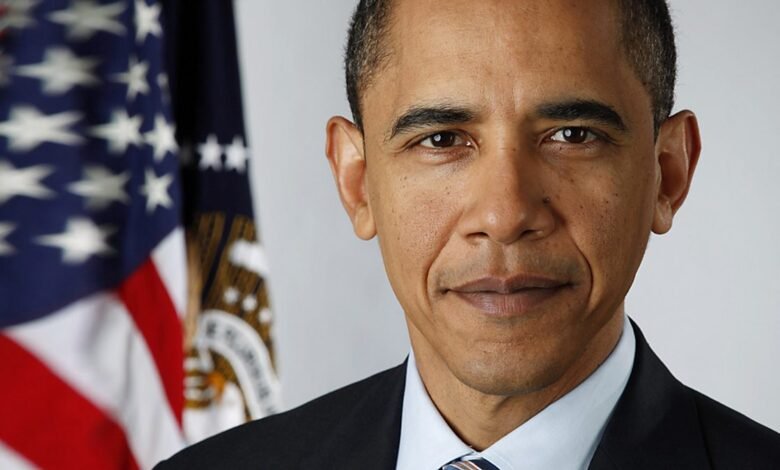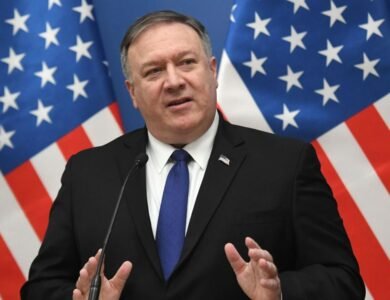
When Barack Obama’s stepped into the Oval Office in January 2009, America faced unprecedented challenges. The nation was grappling with the worst economic crisis since the Great Depression, healthcare costs were spiraling out of control, and international relations were strained. However, over his eight-year presidency, Obama’s achievements would fundamentally reshape the American landscape and establish a lasting legacy that continues to influence policy today.
The 44th President of the United States brought a unique combination of intellectual rigor, diplomatic finesse, and progressive vision to the presidency. His administration’s accomplishments span multiple sectors, from domestic policy reforms to international diplomacy, each leaving an indelible mark on American society. Understanding Obama’s presidential legacy requires examining the specific initiatives and policies that defined his two terms in office.
This comprehensive analysis explores the five most significant Barack Obama accomplishments that not only addressed immediate crises but also laid the groundwork for long-term progress. These achievements demonstrate how effective leadership, strategic thinking, and bipartisan cooperation can drive transformative change even in the face of political opposition and economic uncertainty.
From revolutionary healthcare reform that expanded coverage to millions of Americans to groundbreaking climate change initiatives that positioned the United States as a global environmental leader, Obama’s presidency was marked by bold action and measurable results. Each achievement reflects his administration’s commitment to creating a more equitable, sustainable, and prosperous America for all citizens.
Achievement #1: The Affordable Care Act – Revolutionary Healthcare Reform
Barack Obama’s Transforming American Healthcare
The Affordable Care Act (ACA), commonly known as Obamacare, stands as perhaps the most significant Obama achievement of his presidency. Signed into law on March 23, 2010, this comprehensive healthcare reform legislation fundamentally transformed how Americans access and pay for medical care.
Key Components and Impact
The ACA introduced several groundbreaking provisions that addressed long-standing issues in the American healthcare system. The legislation prohibited insurance companies from denying coverage based on pre-existing conditions, a practice that had left millions of Americans without access to affordable care. Additionally, the law expanded Medicaid eligibility to include individuals earning up to 138% of the federal poverty level, significantly increasing healthcare access for low-income Americans.
One of the most transformative aspects of Obama’s healthcare reform was the establishment of health insurance marketplaces, where individuals and small businesses could compare and purchase insurance plans. These marketplaces, supported by federal subsidies for qualifying individuals, made healthcare coverage accessible to previously uninsured populations.
Measurable Results
The impact of the Affordable Care Act was substantial and measurable. By the end of Obama’s presidency, approximately 20 million Americans had gained health insurance coverage through the ACA’s various provisions. The uninsured rate dropped from 16% in 2010 to 8.6% in 2016, representing the most significant expansion of healthcare coverage since Medicare and Medicaid were established in the 1960s.
Achievement #2: Economic Recovery and the American Recovery and Reinvestment Act
Responding to the Great Recession
When Barack Obama took office, the United States was experiencing its worst economic crisis since the 1930s. The Great Recession had devastated the job market, with unemployment reaching 10% and millions of Americans losing their homes to foreclosure. Obama’s response was swift and comprehensive.
The Recovery Act’s Strategic Approach
The American Recovery and Reinvestment Act of 2009, a $787 billion stimulus package, represented one of the largest economic interventions in American history. This Obama economic policy focused on three key areas: immediate relief for those most impacted by the recession, investment in long-term economic growth, and accountability in government spending.
The stimulus package allocated funds across multiple sectors, including infrastructure development, education, healthcare, and renewable energy. Approximately $288 billion was dedicated to tax cuts and benefits for working families, while $224 billion supported extended unemployment benefits, education funding, and health care programs.
Economic Turnaround Results
The results of Obama’s economic recovery efforts were remarkable. The economy began showing signs of improvement within months of the Recovery Act’s implementation. By the end of his presidency, unemployment had dropped to 4.7%, and the country had experienced 75 consecutive months of job growth – the longest streak in American history at that time.
The automotive industry bailout, another crucial component of Obama’s economic strategy, saved approximately 1.5 million jobs and prevented the collapse of General Motors and Chrysler. This intervention demonstrated how strategic government action could stabilize entire industries during crisis periods.
Achievement #3: Climate Change Leadership and Environmental Protection
Establishing America as a Climate Leader
Obama’s climate change initiatives positioned the United States as a global leader in environmental protection and sustainable energy development. Recognizing climate change as one of the most pressing challenges of the 21st century, his administration implemented comprehensive policies to reduce greenhouse gas emissions and promote clean energy.
The Clean Power Plan and Renewable Energy
The Clean Power Plan, introduced in 2015, established the first-ever federal limits on carbon pollution from power plants. This groundbreaking environmental policy aimed to reduce carbon emissions from the electricity sector by 32% below 2005 levels by 2030. The plan encouraged states to develop flexible strategies for meeting emission reduction targets while maintaining energy reliability and affordability.
Under Obama’s leadership, renewable energy production in the United States doubled. Solar energy capacity increased by more than 5,000% during his presidency, while wind energy capacity tripled. These investments not only reduced environmental impact but also created hundreds of thousands of jobs in the growing clean energy sector.
International Climate Diplomacy
Obama’s environmental achievements extended beyond domestic policy to international leadership. His administration played a crucial role in negotiating the Paris Climate Agreement in 2015, bringing together 196 countries in a unified commitment to combat climate change. This historic agreement represented the most significant global climate accord in history.
Achievement #4: Marriage Equality and LGBTQ+ Rights Advancement
Historic Progress in Civil Rights
Obama’s civil rights achievements included unprecedented advancement of LGBTQ+ rights, marking a significant shift in American social policy. His administration’s support for marriage equality and anti-discrimination protections helped accelerate social change across the nation.
Policy Changes and Legal Support
In 2012, Barack Obama became the first sitting president to publicly support same-sex marriage, a position that helped shift public opinion and political momentum. His administration stopped defending the Defense of Marriage Act in court and actively supported legal challenges that ultimately led to nationwide marriage equality.
The Obama LGBTQ+ policies included executive orders prohibiting discrimination based on sexual orientation and gender identity in federal employment and contracting. His administration also worked to ensure that LGBTQ+ individuals could serve openly in the military, leading to the repeal of “Don’t Ask, Don’t Tell” in 2011.
Cultural and Legal Impact
The cultural impact of Obama’s support for marriage equality was profound. During his presidency, public support for same-sex marriage increased from 37% to 55%, reflecting changing attitudes across American society. The Supreme Court’s 2015 decision in Obergefell v. Hodges, which legalized same-sex marriage nationwide, built upon the foundation of support established by Obama’s administration.
Achievement #5: Restoring America’s International Standing and Diplomatic Leadership
Rebuilding Global Relationships
Obama’s foreign policy achievements focused on rebuilding America’s international relationships and establishing the United States as a diplomatic leader on the global stage. After years of international tension, his administration prioritized multilateral cooperation and diplomatic solutions to complex global challenges.
The Iran Nuclear Deal and Diplomatic Success
The Joint Comprehensive Plan of Action (Iran Nuclear Deal), negotiated in 2015, represented one of Obama’s most significant diplomatic achievements. This multilateral agreement between Iran and six world powers (United States, United Kingdom, France, Germany, Russia, and China) successfully limited Iran’s nuclear program in exchange for sanctions relief.
The deal demonstrated how patient diplomacy and international cooperation could address complex security challenges without military intervention. Independent monitors confirmed that Iran complied with the agreement’s terms, significantly reducing the risk of nuclear proliferation in the Middle East.
Strengthening International Alliances
Obama’s international leadership extended to strengthening traditional alliances while building new partnerships. His administration’s “pivot to Asia” strategy enhanced relationships with key Pacific allies, while maintaining strong ties with European partners. This approach helped address emerging global challenges through coordinated international action.
Conclusion
Barack Obama’s presidential achievements demonstrate how visionary leadership can drive transformative change across multiple sectors of society. From the revolutionary Affordable Care Act that expanded healthcare access to millions of Americans to groundbreaking climate change initiatives that positioned the United States as a global environmental leader, his presidency was marked by measurable progress and lasting impact.
These five achievements – healthcare reform, economic recovery, environmental protection, civil rights advancement, and diplomatic leadership – collectively represent a comprehensive approach to governance that addressed both immediate challenges and long-term opportunities. The Obama legacy continues to influence American policy and international relations, demonstrating the enduring impact of effective presidential leadership.
Understanding Obama’s accomplishments provides valuable insights into how strategic thinking, bipartisan cooperation, and sustained commitment to progressive values can create lasting change. As America continues to face complex challenges, the lessons learned from Obama’s presidency remain relevant and instructive for future leaders and citizens alike.
Read More: Brigitte Macron 7 Shocking Facts About France’s First Lady







